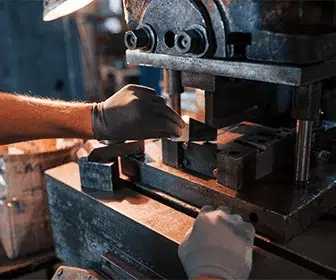
Rapid prototyping has revolutionized the way products are developed and brought to market. In the fast-paced world of innovation, businesses need to be agile and adaptive to stay ahead of the competition. Rapid prototyping allows for quick and cost-effective creation of prototypes, enabling companies to test and iterate on their ideas in a fraction of the time it would take using traditional methods.
The Rise of Rapid Prototyping
Rapid prototyping has gained popularity in various industries, from product design and manufacturing to healthcare and architecture. This technology allows designers and engineers to quickly turn their concepts into physical prototypes, helping them visualize and test their ideas before moving into full-scale production. With rapid prototyping, companies can:
- Reduce time-to-market for new products
- Minimize costs associated with traditional prototyping methods
- Iterate on designs more quickly based on feedback
- Create complex geometries that would be difficult to achieve with traditional manufacturing processes
Types of Rapid Prototyping Technologies
There are several rapid prototyping technologies available, each with its own strengths and limitations. Some of the most common types include:
- Stereolithography (SLA): Uses a laser to solidify liquid resin into layers to create a 3D object.
- Fused Deposition Modeling (FDM): Extrudes thermoplastic material layer by layer to build a 3D model.
- Selective Laser Sintering (SLS): Uses a laser to sinter powdered material together to create a 3D object.
- PolyJet Printing: Sprays layers of liquid photopolymer onto a build platform and cures them with UV light.
The Benefits of Rapid Prototyping
Rapid prototyping offers numerous benefits to companies looking to innovate and bring new products to market. Some of the key advantages of rapid prototyping include:
- Speed: Rapid prototyping allows for quick turnaround times, accelerating the product development process.
- Cost-Effectiveness: By eliminating the need for expensive tooling and molds, rapid prototyping can save companies money on prototyping costs.
- Flexibility: Design changes can be easily implemented in a rapid prototyping workflow, enabling companies to iterate on their ideas quickly.
- Customization: Rapid prototyping enables the creation of customized products tailored to specific customer needs and preferences.
Applications of Rapid Prototyping
Rapid prototyping is widely used across industries for various applications, including:
- Product Design: Companies use rapid prototyping to create physical models of new products for testing and validation.
- Medical Prototyping: The healthcare industry uses rapid prototyping to create patient-specific implants and surgical guides.
- Architectural Models: Architects use rapid prototyping to create scale models of buildings and structures for visualization.
- Tooling and Manufacturing: Rapid prototyping is used to create molds, jigs, and fixtures for manufacturing processes.
The Future of Rapid Prototyping
As technology continues to advance, the future of rapid prototyping looks promising. Some of the trends shaping the future of rapid prototyping include:
- Integration of Additive Manufacturing: Rapid prototyping is increasingly being integrated with additive manufacturing processes for end-use production parts.
- Advanced Materials: The development of new materials with enhanced properties is expanding the capabilities of rapid prototyping technologies.
- Automation and Robotics: Automation and robotics are being leveraged to streamline the rapid prototyping process and improve efficiency.
- On-Demand Production: The ability to quickly produce customized products on-demand is a key driver for the future of rapid prototyping.
Challenges and Considerations
While rapid prototyping offers many benefits, there are also challenges and considerations to keep in mind, such as:
- Quality Control: Ensuring the quality and consistency of rapid prototyped parts can be a challenge, especially with complex geometries.
- Cost: While rapid prototyping can be cost-effective for small production runs, it may not always be the most economical option for large-scale manufacturing.
- Post-Processing: Some rapid prototyping technologies require post-processing steps, such as curing, sanding, or painting, which can add time and cost to the process.
- Material Limitations: The range of materials available for rapid prototyping may be limited compared to traditional manufacturing processes.